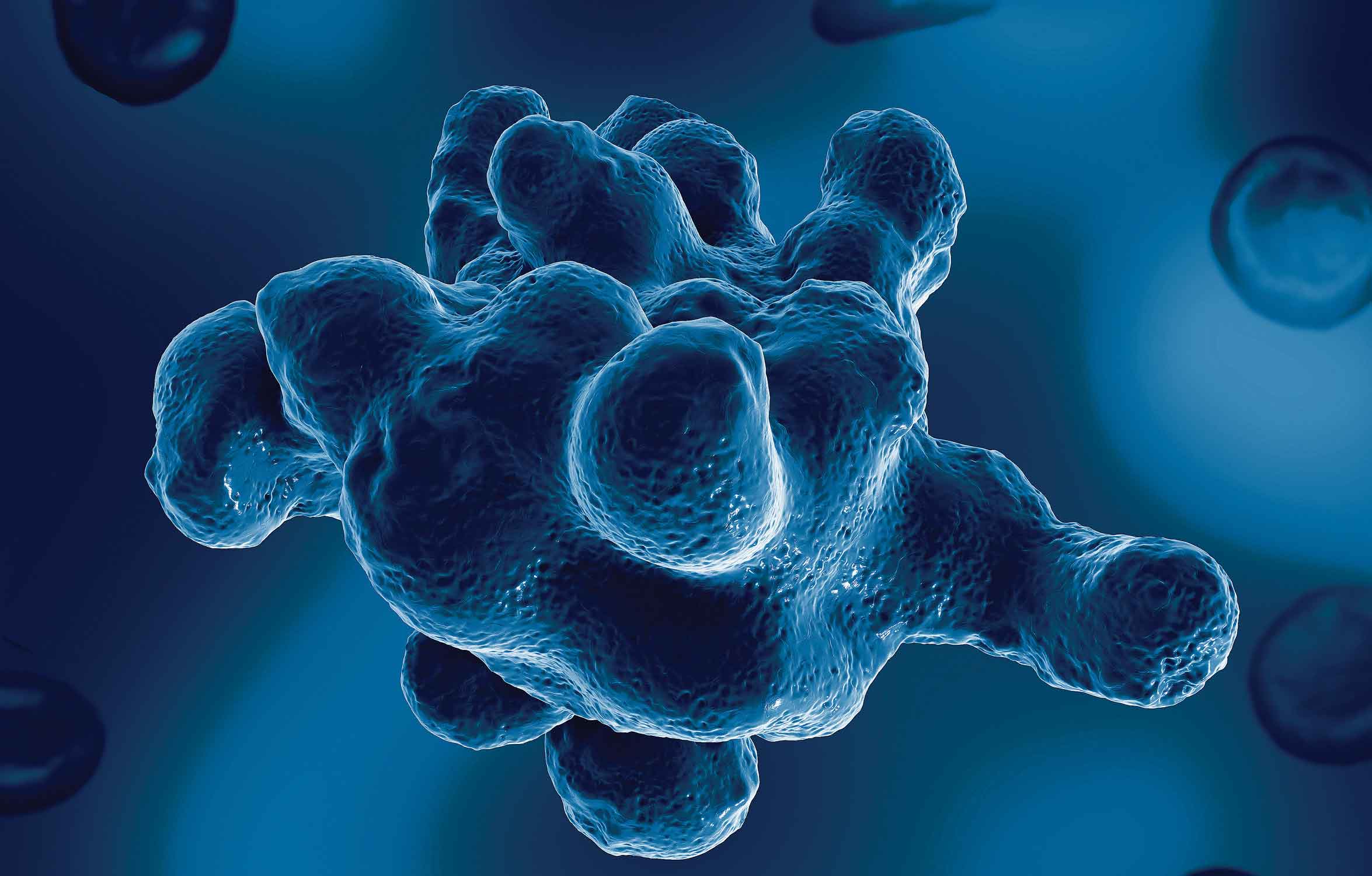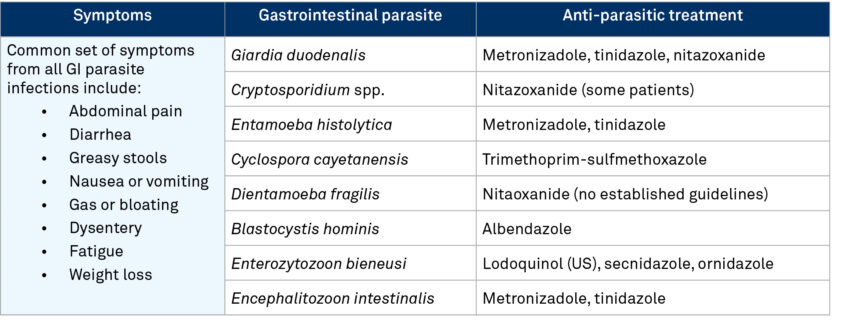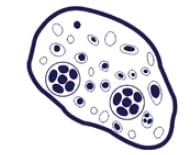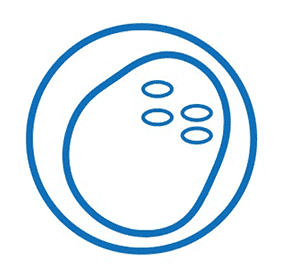E. histolytica (true pathogen): symptoms, prevention & treatment

Amebiasis symptoms
Symptoms associated with E. histolytica (true pathogen) infection
Approximately ninety percent of Entamoeba infections are asymptomatic. However, for those who develop symptomatic infections, frequent health complaints include:
- loose stool
- blood and mucus in diarrhoeal stools
- abdominal cramping
- stomach pain
Increased disease severity and mortality are more frequently seen in younger age groups, during pregnancy, malignancy, malnutrition, alcoholism, and corticosteroid use [1].
Unusual but serious complications such as fulminant necrotizing colitis, toxic megacolon, and fistulizing perianal ulcerations can occur, especially when diagnosis and treatment is not carried out rapidly. Therefore, accurate and timely diagnosis is important.
Patients that develop necrotizing colitis have a mortality rate of 40% and those with concomitant liver abscess mortality increases to 89% [2,3].
Exclusion of inflammatory bowel disease is critically important, given the similarity of clinical symptoms as treatment with corticosteroids can lead to more serious complications.
The benefits of employing molecular syndromic testing for overlapping gastrointestinal signs and symptoms
Genetic Signatures' EasyScreen Gastrointestinal Parasite Detection Kit can detect 8 parasite pathogens from a single sample, in a single test, increasing the likelihood of identifying co-infections from multiple parasites that might be missed with traditional testing methods. This is particularly important in cases where patients present with non-specific or overlapping symptoms that could be caused by a variety of gastrointestinal pathogens.
Preventing amebiasis
Preventing amebiasis primarily involves maintaining good hygiene, ensuring safe water consumption, and practicing safe food handling.
Advice from government health departments also suggests caution when consuming street food from vendors at holiday destinations with poor sanitation, and higher incidence of E. histolytica (true pathogen) [4].

Treatment for E. histolytica (true pathogen) infection
Due to the risk of spread and the risk of developing extraintestinal manifestations, all E. histolytica infections need to be treated.
Patients with symptomatic intestinal infection and extraintestinal disease are often treated with metronidazole or tinidazole, and then iodoquinol or paromomycin.
It is recommended to also, treat asymptomatic patients infected with E. histolytica with iodoquinol or paromomycin, because they can infect others and because 4%–10% of asymptomatic patients develop disease within 1 year if untreated.
For invasive amoebiasis and extra intestinal disease, nitroimidazoles (e.g., metronidazole) are the mainstay therapy but this is only active against the trophozoite stage. If fulminant amoebic colitis develops, broad-spectrum antibiotics should be added to the treatment due to the increased risk of secondary bacterial infection [5].
No vaccines are currently available for E. histolytica, but novel vaccine candidates are currently being investigated in rodent and non-human primate models and appear promising at this early stage.
Treatment challenge:
Treatment of gastrointestinal parasite infections is challenging due to parasite diversity and their specific treatment requirements, despite causing common symptoms (see table below). Misdiagnosis can lead to ineffective treatment. In addition, misuse or overuse of anti-parasitic drugs can lead to the development of antimicrobial resistance. Thus, timely and accurate detection of parasitic pathogens can support appropriate patient management and improve health outcomes.

Syndromic testing for 8 gastrointestinal parasites in a single test
Up to 60 patients screened in a single, automated workflow...with same day reporting!

Find out more about our unique 3base™ solution for detecting gastrointestinal parasites
References
- Kantor M, Abrantes A, Estevez A, Schiller A, Torrent J, Gascon J, Hernandez R, Ochner C. Entamoeba Histolytica: Updates in Clinical Manifestation, Pathogenesis, and Vaccine Development. Can J Gastroenterol Hepatol. 2018 Dec 2; 2018:4601420. doi: 10.1155/2018/4601420. PMID: 30631758; PMCID: PMC6304615.
- Ortiz-Castillo F, Salinas-Aragón LE, Sánchez-Aguilar M, Tapia-Pérez JH, Sánchez-Reyna M, Pierdant-Pérez M, Sánchez-Rodríguez JJ, Hernández-Sierra JF. Amoebic toxic colitis: analysis of factors related to mortality. Pathog Glob Health. 2012 Aug;106(4):245-8. doi: 10.1179/2047773212Y.0000000019. PMID: 23265426; PMCID: PMC4001592.
- Almalki M, Yaseen W. Cecal ameboma mimicking obstructing colonic carcinoma. J Surg Case Rep. 2018 Jun 11;2018(6):rjy124. doi: 10.1093/jscr/rjy124. PMID: 29942473; PMCID: PMC6007312
- CDC website. wwwnc.cdc.gov/travel/yellowbook/2024/infections-diseases/amebiasis
- I.Simpson, I.J. Woolley, and B.J. Gardiner, “Caught in the act... a case of fulminant amoebic colitis,” JMM Case Reports, vol. 2, no. 4, 2015
https://www.ncbi.nlm.nih.gov/pmc/articles/PMC9699389/







